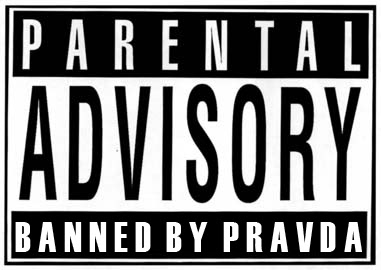Hundreds of young self-styled anarchists erupted in violent anger in central Athens after police shot to death a teenager late Saturday and the rioting soon spread to other Greek cities.
The rampaging youths threw firebombs, smashed storefronts and burned businesses as they battled with police, who fought back with tear gas, early Sunday.
The shooting death of a 16-year-old boy by a member of an elite police corps was the trigger, officials said.
A police statement said the incident started when six youths pelted a police patrol car with stones. The teen was shot as he tried to throw a fuel-filled bomb at the officers, police said.
AP:
Police issued a statement saying the patrol car, with two officers inside, was attacked by a group of 30 stone-throwing youths while patrolling the central district of Exarchia.
According to the statement, the two officers left their car to confront the rioters.
"The two (police officers) maintain that they were attacked again and responded, with one firing a stun grenade and the other, by shooting three times, resulting in the fatal wounding of the minor," the statement said.
Two Greek TV stations said the young man shot was rushed to a hospital but died upon arrival.
AP:
The casualties of the riot included both large multinationals' outlets, such as H&M and Benetton, and small shops whose owners were already feeling the pinch of the economic downturn before they were faced with expensive repairs that they will have to undertake to get their businesses up and running again.
In some ways, the destruction was not indiscriminate. While clothing shops - the majority of Ermou Street outlets - and banks were heavily damaged, the numerous snack bars were all left intact and, even at this very early (or late) hour they were full of customers.
A few blocks north of Syntagma Square, at Akadimias Street, another main Athens thoroughfare, the rioters had almost totally destroyed the bus stops and ticket kiosks used daily by hundreds of thousands of commuters in what is one of the city's major transport hubs. A few of the rioters - almost all of them self-styled anarchists - were still there, a few still masked to camouflage themselves and some armed with steel pipes and warily eyeing the riot police that were camped two blocks further ahead, holding shields and with gas masks dangling from their necks.
There seemed to be no prospect of imminent intervention: the elite policemen were casually chatting in small groups, most looking away from their adversaries. The street was cut off by a burning barricade, stoked by all sorts of flammable items, including chairs and the plastic roofs of dismantled bus stops.
Postings at Web sites served to coordinate the moves of the rioters, providing detailed information about police movements and violent incidents, as soon as they erupted, together with encouragement to join the rioters at specific locations. Postings also served as rallying cries, with slogans such as «state terrorism will not pass», «blood demands revenge» and «a pickax through each cop's skull.»
Täytyypä taas toistaa parin vuoden takaiset kommenttini anarkismista:
Kommunismi on yhteiskuntajärjestelmä, jossa ei ole yksityistä omistusoikeutta. Tällainen yhteiskunta ei voi syntyä muuten kuin totalitaarisen diktatuurin kautta. Ihmiset eivät todellakaan vapaaehtoisesti luovuta pois kaikkea omaisuuttaan. Jos ihmiset vapaaehtoisesti muuttaisivat hippikommuuneihin tms. yhteisöihin, tämä olisi anarkokapitalismia, ei suinkaan anarkokommunismia. Ero anarkokapitalismin ja anarkokommunismin välillä on nimenomaan vapaaehtoisuus: ihmiset voivat anarkokapitalismissa tehdä omaisuudellaan mitä haluavat, vaikkapa lahjoittaa sen pois tai perustaa kommuuneja, sen sijaan anarkokommunismissa ihmiset eivät voi vapaasti päättää, haluavatko elää kommunismissa, heillä ei nimittäin ole mitään omaisuutta, jonka käytöstä he voisivat itse vapaasti päättää. Niinpä anarkokommunismi perustuu kollektiivin käyttämään väkivaltaan yksilöä vastaan.
Useimmat ihmiset assosioivat anarkismin edelläkuvattuun anarkokommunismiin, jonka vihaaminen onkin oikein.
Mannerheim sanoi muistelmissaan pitävänsä bolshevismia anarkismina. Olen taipuvainen yhtymään hänen näkemykseensä sikäli, kun anarkismilla tarkoitetaan anarkokommunismia.Useimmat anarkisteiksi itseään kutsuvat ovat anarkokommunisteja eli loputonta terroria kannattavia bolshevikkeja.
Melkein mikä tahansa lainalainen yhteiskuntajärjestys on parempi kuin bolshevistinen väkivaltainen anarkia.
Juuri tällaiset bolshevikit terrorisoivat Kreikkaa tällä hetkellä.
Helsingin Sanomat kuitenkin puolustelee näitä bolshevikkeja:
Sytykettä protesteihin antaa tyytymättömyys Kostas Karamanlisin ikeistohallituksen politiikkaa kohtaan. Rikkaiden ja köyhien kuilu on viime vuosina syventynyt ja viidennes kreikkalaisista elää köyhyysrajan alapuolella.
Viikonvaihteessa ei ollut tietoa, keitä poliisiautoa kivittäneet ja polttopulloilla heitelleet nuoret olivat. Ateenan keskustan Exarkia on tunnettu protestialue, ja sillä on synkkä historia. Sotilasjuntan armeija valtasi alueella sijaitsevan teknisen korkeakoulun 1973 ja murskasi verisesti opiskelijoiden kapinan. Tuon tapahtuman muisto elää yhä anarkistien ja opiskelijain liikehdinnän taustalla.
